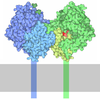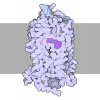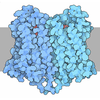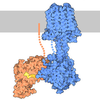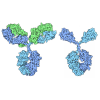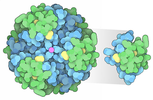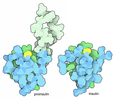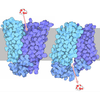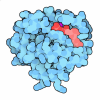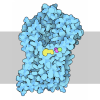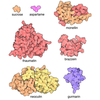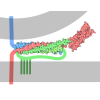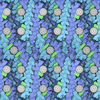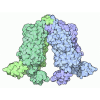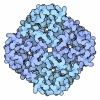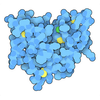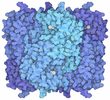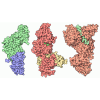+ Open data
Open data
- Basic information
Basic information
| Entry | Database: PDB / ID: 8ugy | |||||||||||||||
|---|---|---|---|---|---|---|---|---|---|---|---|---|---|---|---|---|
| Title | Serotonin 1E receptor (5-HT1eR)-Gi1 Complex bound with Mianserin | |||||||||||||||
 Components Components |
| |||||||||||||||
 Keywords Keywords | SIGNALING PROTEIN / GPCR | |||||||||||||||
| Function / homology |  Function and homology information Function and homology informationGi/o-coupled serotonin receptor activity / Serotonin receptors / serotonin receptor activity / G protein-coupled serotonin receptor activity / serotonin binding / neurotransmitter receptor activity / G protein-coupled receptor signaling pathway, coupled to cyclic nucleotide second messenger / Adenylate cyclase inhibitory pathway / positive regulation of protein localization to cell cortex / T cell migration ...Gi/o-coupled serotonin receptor activity / Serotonin receptors / serotonin receptor activity / G protein-coupled serotonin receptor activity / serotonin binding / neurotransmitter receptor activity / G protein-coupled receptor signaling pathway, coupled to cyclic nucleotide second messenger / Adenylate cyclase inhibitory pathway / positive regulation of protein localization to cell cortex / T cell migration / D2 dopamine receptor binding / response to prostaglandin E / G protein-coupled serotonin receptor binding / adenylate cyclase-inhibiting serotonin receptor signaling pathway / adenylate cyclase regulator activity / regulation of mitotic spindle organization / cellular response to forskolin / Regulation of insulin secretion / G protein-coupled receptor binding / positive regulation of cholesterol biosynthetic process / G protein-coupled receptor activity / adenylate cyclase-inhibiting G protein-coupled receptor signaling pathway / adenylate cyclase-modulating G protein-coupled receptor signaling pathway / G-protein beta/gamma-subunit complex binding / response to peptide hormone / Olfactory Signaling Pathway / Activation of the phototransduction cascade / G beta:gamma signalling through PLC beta / Presynaptic function of Kainate receptors / Thromboxane signalling through TP receptor / G protein-coupled acetylcholine receptor signaling pathway / G-protein activation / Activation of G protein gated Potassium channels / Inhibition of voltage gated Ca2+ channels via Gbeta/gamma subunits / Prostacyclin signalling through prostacyclin receptor / G beta:gamma signalling through CDC42 / Glucagon signaling in metabolic regulation / G beta:gamma signalling through BTK / Synthesis, secretion, and inactivation of Glucagon-like Peptide-1 (GLP-1) / ADP signalling through P2Y purinoceptor 12 / Sensory perception of sweet, bitter, and umami (glutamate) taste / photoreceptor disc membrane / Glucagon-type ligand receptors / Adrenaline,noradrenaline inhibits insulin secretion / Vasopressin regulates renal water homeostasis via Aquaporins / G alpha (z) signalling events / Glucagon-like Peptide-1 (GLP1) regulates insulin secretion / ADORA2B mediated anti-inflammatory cytokines production / cellular response to catecholamine stimulus / ADP signalling through P2Y purinoceptor 1 / GDP binding / G beta:gamma signalling through PI3Kgamma / adenylate cyclase-activating dopamine receptor signaling pathway / Cooperation of PDCL (PhLP1) and TRiC/CCT in G-protein beta folding / GPER1 signaling / Inactivation, recovery and regulation of the phototransduction cascade / cellular response to prostaglandin E stimulus / G-protein beta-subunit binding / heterotrimeric G-protein complex / G alpha (12/13) signalling events / sensory perception of taste / extracellular vesicle / signaling receptor complex adaptor activity / Thrombin signalling through proteinase activated receptors (PARs) / G protein activity / GTPase binding / Ca2+ pathway / retina development in camera-type eye / cell cortex / midbody / High laminar flow shear stress activates signaling by PIEZO1 and PECAM1:CDH5:KDR in endothelial cells / fibroblast proliferation / phospholipase C-activating G protein-coupled receptor signaling pathway / G alpha (i) signalling events / Hydrolases; Acting on acid anhydrides; Acting on GTP to facilitate cellular and subcellular movement / G alpha (s) signalling events / chemical synaptic transmission / G alpha (q) signalling events / Ras protein signal transduction / Extra-nuclear estrogen signaling / cell population proliferation / G protein-coupled receptor signaling pathway / lysosomal membrane / cell division / GTPase activity / centrosome / dendrite / synapse / protein-containing complex binding / nucleolus / GTP binding / magnesium ion binding / signal transduction / extracellular exosome / nucleoplasm / membrane / plasma membrane / cytosol / cytoplasm Similarity search - Function | |||||||||||||||
| Biological species |  Homo sapiens (human) Homo sapiens (human) | |||||||||||||||
| Method | ELECTRON MICROSCOPY / single particle reconstruction / cryo EM / Resolution: 3.31 Å | |||||||||||||||
 Authors Authors | Zilberg, G. / Warren, A.L. / Wacker, D. | |||||||||||||||
| Funding support |  United States, 4items United States, 4items
| |||||||||||||||
 Citation Citation |  Journal: Sci Adv / Year: 2024 Journal: Sci Adv / Year: 2024Title: Structural insights into the unexpected agonism of tetracyclic antidepressants at serotonin receptors 5-HTR and 5-HTR. Authors: Gregory Zilberg / Alexandra K Parpounas / Audrey L Warren / Bianca Fiorillo / Davide Provasi / Marta Filizola / Daniel Wacker /  Abstract: Serotonin [5-hydroxytryptamine (5-HT)] acts via 13 different receptors in humans. Of these receptor subtypes, all but 5-HTR have confirmed roles in native tissue and are validated drug targets. ...Serotonin [5-hydroxytryptamine (5-HT)] acts via 13 different receptors in humans. Of these receptor subtypes, all but 5-HTR have confirmed roles in native tissue and are validated drug targets. Despite 5-HTR's therapeutic potential and plausible druggability, the mechanisms of its activation remain elusive. To illuminate 5-HTR's pharmacology in relation to the highly homologous 5-HTR, we screened a library of aminergic receptor ligands at both receptors and observe 5-HTR/5-HTR agonism by multicyclic drugs described as pan-antagonists at 5-HT receptors. Potent agonism by tetracyclic antidepressants mianserin, setiptiline, and mirtazapine suggests a mechanism for their clinically observed antimigraine properties. Using cryo-EM and mutagenesis studies, we uncover and characterize unique agonist-like binding poses of mianserin and setiptiline at 5-HTR distinct from similar drug scaffolds in inactive-state 5-HTR structures. Together with computational studies, our data suggest that these binding poses alongside receptor-specific allosteric coupling in 5-HTR and 5-HTR contribute to the agonist activity of these antidepressants. | |||||||||||||||
| History |
|
- Structure visualization
Structure visualization
| Structure viewer | Molecule:  Molmil Molmil Jmol/JSmol Jmol/JSmol |
|---|
- Downloads & links
Downloads & links
- Download
Download
| PDBx/mmCIF format |  8ugy.cif.gz 8ugy.cif.gz | 173.5 KB | Display |  PDBx/mmCIF format PDBx/mmCIF format |
|---|---|---|---|---|
| PDB format |  pdb8ugy.ent.gz pdb8ugy.ent.gz | 131.4 KB | Display |  PDB format PDB format |
| PDBx/mmJSON format |  8ugy.json.gz 8ugy.json.gz | Tree view |  PDBx/mmJSON format PDBx/mmJSON format | |
| Others |  Other downloads Other downloads |
-Validation report
| Summary document |  8ugy_validation.pdf.gz 8ugy_validation.pdf.gz | 1.4 MB | Display |  wwPDB validaton report wwPDB validaton report |
|---|---|---|---|---|
| Full document |  8ugy_full_validation.pdf.gz 8ugy_full_validation.pdf.gz | 1.4 MB | Display | |
| Data in XML |  8ugy_validation.xml.gz 8ugy_validation.xml.gz | 35.6 KB | Display | |
| Data in CIF |  8ugy_validation.cif.gz 8ugy_validation.cif.gz | 51.3 KB | Display | |
| Arichive directory |  https://data.pdbj.org/pub/pdb/validation_reports/ug/8ugy https://data.pdbj.org/pub/pdb/validation_reports/ug/8ugy ftp://data.pdbj.org/pub/pdb/validation_reports/ug/8ugy ftp://data.pdbj.org/pub/pdb/validation_reports/ug/8ugy | HTTPS FTP |
-Related structure data
| Related structure data |  42241MC  8uh3C M: map data used to model this data C: citing same article ( |
|---|---|
| Similar structure data | Similarity search - Function & homology  F&H Search F&H Search |
- Links
Links
- Assembly
Assembly
| Deposited unit | 
|
|---|---|
| 1 |
|
- Components
Components
-Guanine nucleotide-binding protein ... , 3 types, 3 molecules ABG
| #1: Protein | Mass: 40414.047 Da / Num. of mol.: 1 / Mutation: S47N, G203A, E245A, and A326S Source method: isolated from a genetically manipulated source Source: (gene. exp.)  Homo sapiens (human) / Gene: GNAI1 / Cell line (production host): Sf9 / Production host: Homo sapiens (human) / Gene: GNAI1 / Cell line (production host): Sf9 / Production host:  |
|---|---|
| #2: Protein | Mass: 39418.086 Da / Num. of mol.: 1 Source method: isolated from a genetically manipulated source Source: (gene. exp.)  Homo sapiens (human) / Gene: GNB1 / Cell line (production host): Sf9 / Production host: Homo sapiens (human) / Gene: GNB1 / Cell line (production host): Sf9 / Production host:  |
| #3: Protein | Mass: 7861.143 Da / Num. of mol.: 1 Source method: isolated from a genetically manipulated source Source: (gene. exp.)  Homo sapiens (human) / Gene: GNG2 / Cell line (production host): Sf9 / Production host: Homo sapiens (human) / Gene: GNG2 / Cell line (production host): Sf9 / Production host:  |
-Protein , 1 types, 1 molecules R
| #4: Protein | Mass: 38822.594 Da / Num. of mol.: 1 / Mutation: L111W Source method: isolated from a genetically manipulated source Source: (gene. exp.)  Homo sapiens (human) / Gene: HTR1E / Cell line (production host): Sf9 / Production host: Homo sapiens (human) / Gene: HTR1E / Cell line (production host): Sf9 / Production host:  |
|---|
-Non-polymers , 3 types, 7 molecules 


| #5: Chemical | ChemComp-CLR / #6: Chemical | ChemComp-WRU / | Mass: 264.365 Da / Num. of mol.: 1 / Source method: obtained synthetically / Formula: C18H20N2 / Feature type: SUBJECT OF INVESTIGATION #7: Water | ChemComp-HOH / | |
|---|
-Details
| Has ligand of interest | Y |
|---|---|
| Has protein modification | Y |
-Experimental details
-Experiment
| Experiment | Method: ELECTRON MICROSCOPY |
|---|---|
| EM experiment | Aggregation state: PARTICLE / 3D reconstruction method: single particle reconstruction |
- Sample preparation
Sample preparation
| Component | Name: Quaternary complex of serotonin receptor 5-HT1eR with the Gi1 heterotrimer Type: COMPLEX / Entity ID: #1-#4 / Source: RECOMBINANT |
|---|---|
| Molecular weight | Experimental value: NO |
| Source (natural) | Organism:  Homo sapiens (human) Homo sapiens (human) |
| Source (recombinant) | Organism:  |
| Buffer solution | pH: 7.4 |
| Specimen | Embedding applied: NO / Shadowing applied: NO / Staining applied: NO / Vitrification applied: YES |
| Vitrification | Instrument: LEICA EM GP / Cryogen name: ETHANE |
- Electron microscopy imaging
Electron microscopy imaging
| Experimental equipment |  Model: Titan Krios / Image courtesy: FEI Company |
|---|---|
| Microscopy | Model: FEI TITAN KRIOS |
| Electron gun | Electron source:  FIELD EMISSION GUN / Accelerating voltage: 300 kV / Illumination mode: FLOOD BEAM FIELD EMISSION GUN / Accelerating voltage: 300 kV / Illumination mode: FLOOD BEAM |
| Electron lens | Mode: BRIGHT FIELD / Nominal defocus max: 1800 nm / Nominal defocus min: 500 nm |
| Image recording | Electron dose: 52.54 e/Å2 / Film or detector model: GATAN K3 (6k x 4k) |
- Processing
Processing
| EM software |
| ||||||||||||||||||||||||
|---|---|---|---|---|---|---|---|---|---|---|---|---|---|---|---|---|---|---|---|---|---|---|---|---|---|
| CTF correction | Type: PHASE FLIPPING AND AMPLITUDE CORRECTION | ||||||||||||||||||||||||
| 3D reconstruction | Resolution: 3.31 Å / Resolution method: FSC 0.143 CUT-OFF / Num. of particles: 1321565 / Symmetry type: POINT | ||||||||||||||||||||||||
| Refine LS restraints |
|
 Movie
Movie Controller
Controller




 PDBj
PDBj

